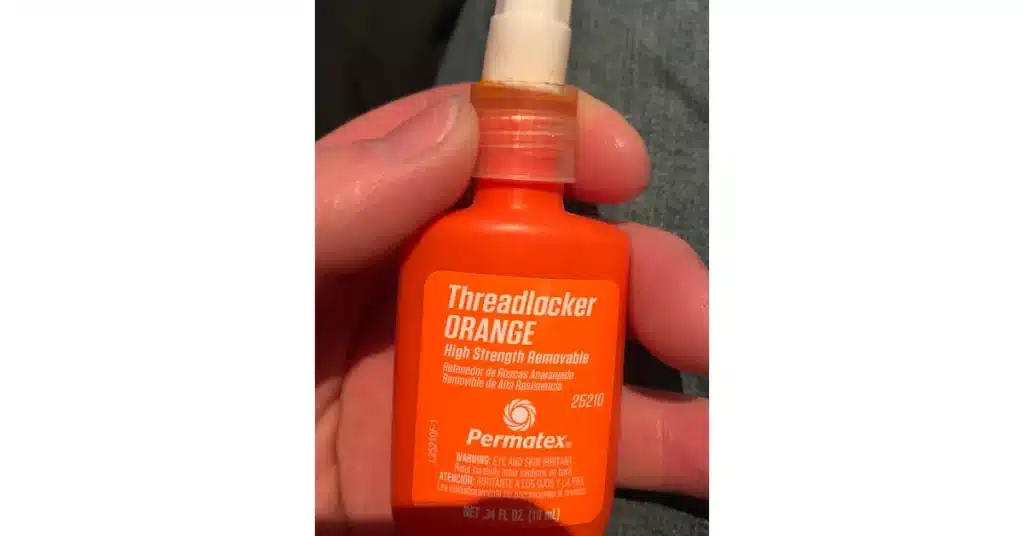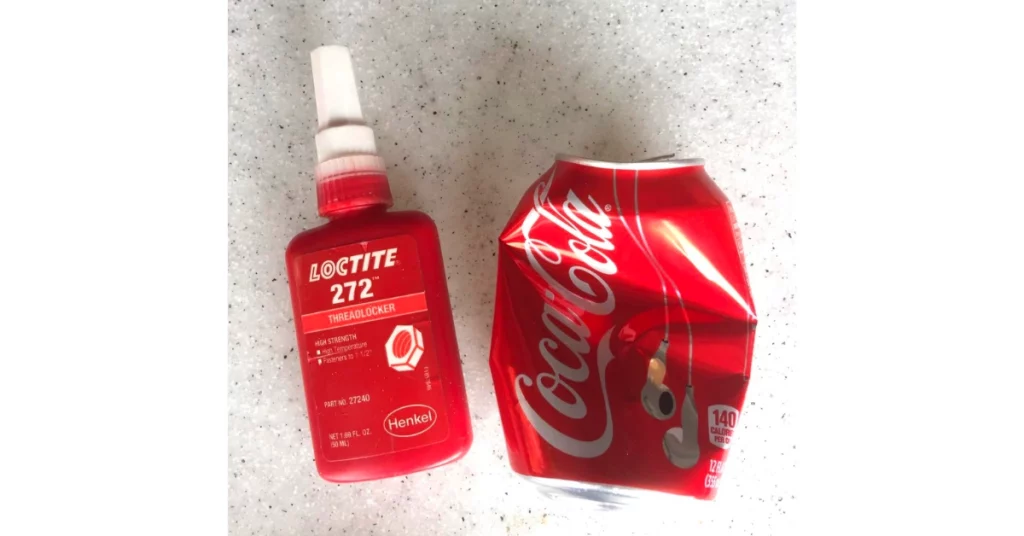You can use threadlockers for various bolts, threaded fasteners, and screws for components with the risk of them loosening or falling off. Loctite has some of the best and most popular threadlockers in the market and comes in various colors.
Loctite threadlocker colors are important since they indicate the glue’s strength and intended purposes. Furthermore, you have more options for thread sizes, viscosity, and more. So, in the battle between Orange Loctite vs. Red, which one should you pick and why? I’ll review the specifications and features of Orange and Red Loctite and how they differ in this article.
Read More: Orange Loctite vs. Blue
Orange Loctite vs. Red
Overview of Orange Loctite
Loctite threadlockers are offered in 4 different colors, but Orange is not one of them. Orange Loctite products are rare, and they share some features with other colors of Loctite products.

Loctite 266 is a threadlocker manufactured by Loctite-Henkel that comes in Orange-Red. The 266 appears Orange-Red in uncured form and is a heavy-duty threadlocker from Loctite. Since it comes in Orange-Red, it shares the features with Red Loctite threadlockers.
The 266 is tolerant to shock and high heat levels (up to 232°C) and protects against leakage due to constant shock or vibration. Orange Loctite threadlockers work well with all metals and passive substrates like Stainless Steel, Steel, and more. Furthermore, they are tolerant to contamination on the surface due to various industrial oils, cutting fluids, anti-corrosion fluids, or other contaminants.
The 266 has a high viscosity and is thixotropic, and you can use it for fasteners up to 20 mm in diameter. A full cure will take around 24 hours, and you can speed up the curing process using an activator.
Another Orange Loctite product available is the 574, a gasketing product. The 574 is a general-purpose gasketing product, and you can use it to seal close-fitting metal joints. The 574 provides enhanced protection against contaminants and industrial oils and is tolerant against water or glycol.
Read More: Yellow Loctite vs. Blue
Overview of Red Loctite
Loctite offers threadlockers in four colors, and Red is the strongest among them. Unlike Orange Loctite, Red is one of the most popular Loctite threadlocker variants, and you have multiple options. Some of the most popular Red Loctite threadlockers are Loctite 262, 271, 272, and more.
Red Loctite threadlockers are heavy-duty, industrial-grade threadlockers that offer robust, durable, and long-lasting bonds once fully cured. Red Loctite forms a permanent bond once it’s wholly cured, and you need extra preparations if you plan to disassemble your components later.
Red Loctite works well with all metals and is suitable for passive substrates like Brass, Steel, Stainless Steel, and more. Furthermore, Red Loctite threadlockers tolerate extreme heat (up to 232°C) and freezing temperatures.
You can use Red Loctite for industrial components and other heavy-duty applications since it protects against shock or vibration. Furthermore, Red Loctite is also tolerant to contamination due to anti-corrosion, cutting, protection fluids, and other contaminants.

The 272 is a robust Red Loctite threadlocker with a shear strength of 3900 psi and a working temperature range from -55°C to 232°C. Red Loctite threadlockers are available for various thread sizes and in various viscosities.
Red Loctite threadlockers typically take 24 hours for a full cure, and you can speed up the process using activators.
Read More: Loctite Blue vs. Red
Differences Between Orange Loctite And Red Loctite
Let’s examine how Orange Loctite and Red Loctite differ.
Available Options
Orange is not a common color for Loctite threadlockers, so you don’t have many options available. Loctite 266 is an Orange-Red threadlocker that you can use for threaded fasteners up to 20 mm in diameter and has high viscosity.
On the other hand, Red is one of the popular Loctite threadlocker colors, and you have much more options available. You can get Red Loctite for various sizes of nuts, bolts, threaded fasteners, and in various viscosities.
For example, Loctite 262 and 272 are two Red Loctite threadlockers. The 262 and 272 are suitable for threaded fasteners up to M25 and M36, respectively.
Curing Time and Removal
Both Orange Loctite and Red Loctite have a curing time of 24 hours. The cure time depends on the substrates used, bondline gap, and temperature and can be reduced by activators.
If you plan to remove either threadlockers, you need the help of localized heat and need to use solvents.
Last Opinion
So, which one should you side with in the battle between Orange Loctite vs. Red? Red Loctite has multiple options for viscosities and suitable thread sizes that suit your specific needs better, while Orange Loctite has only a few options.

